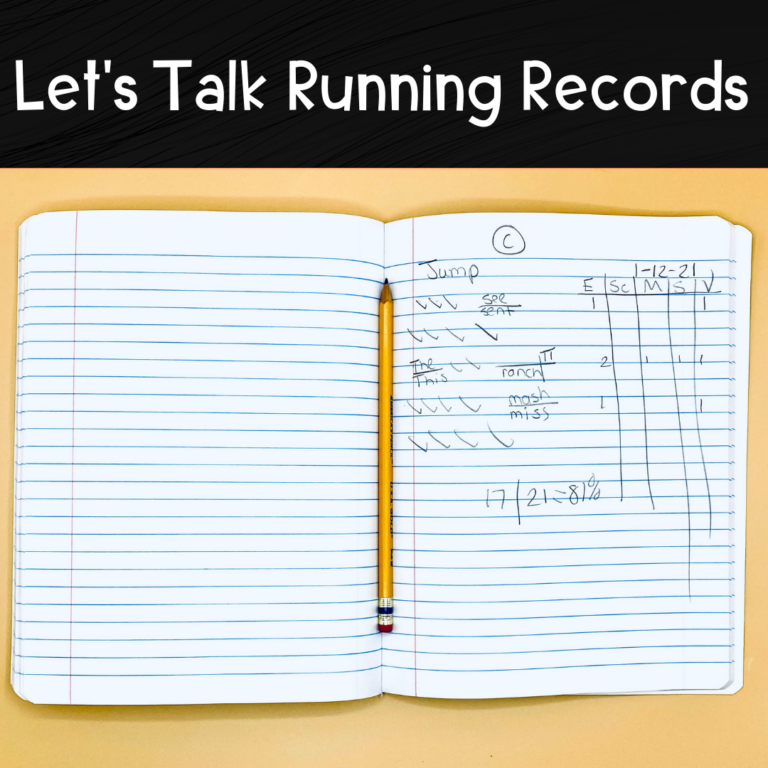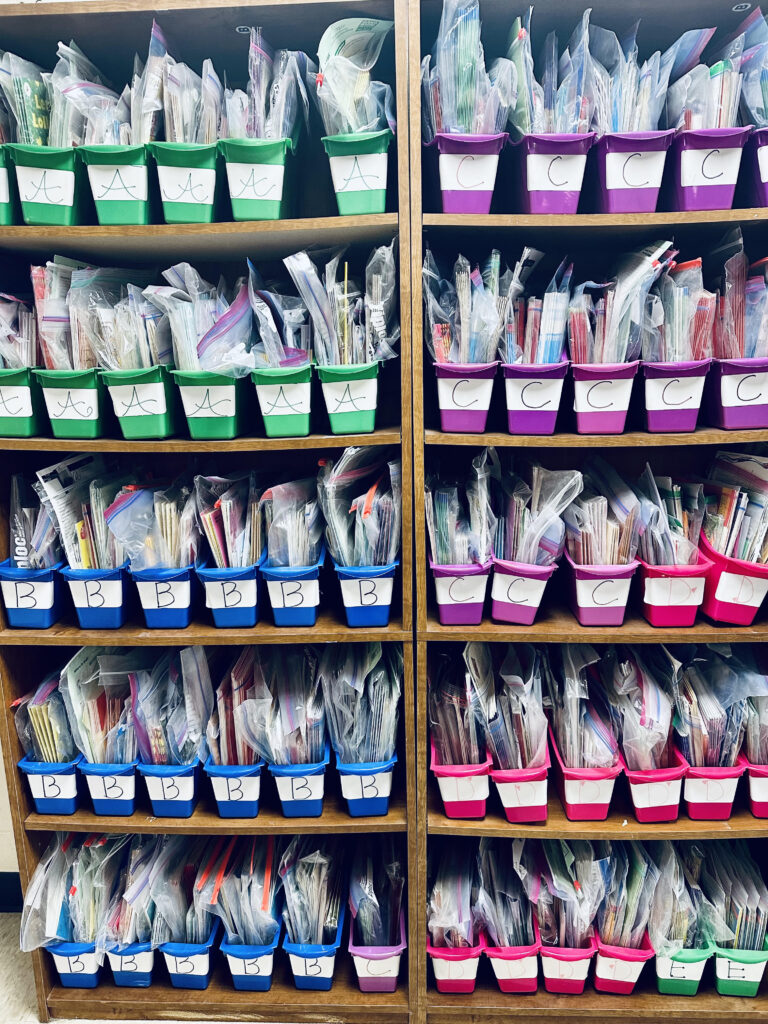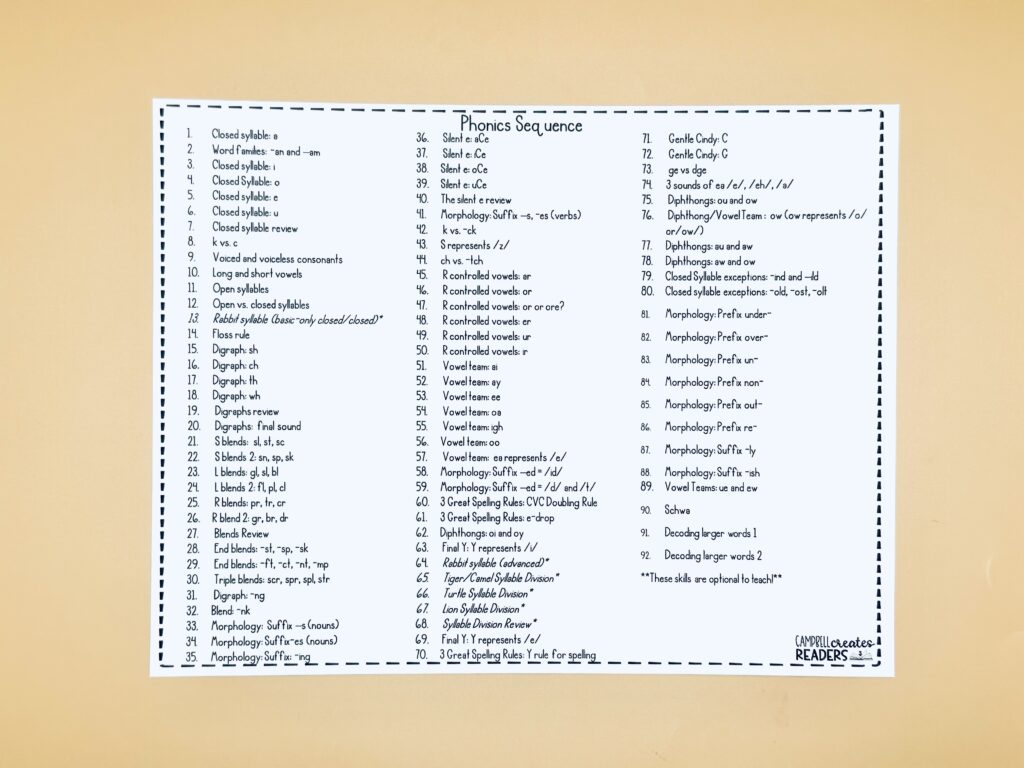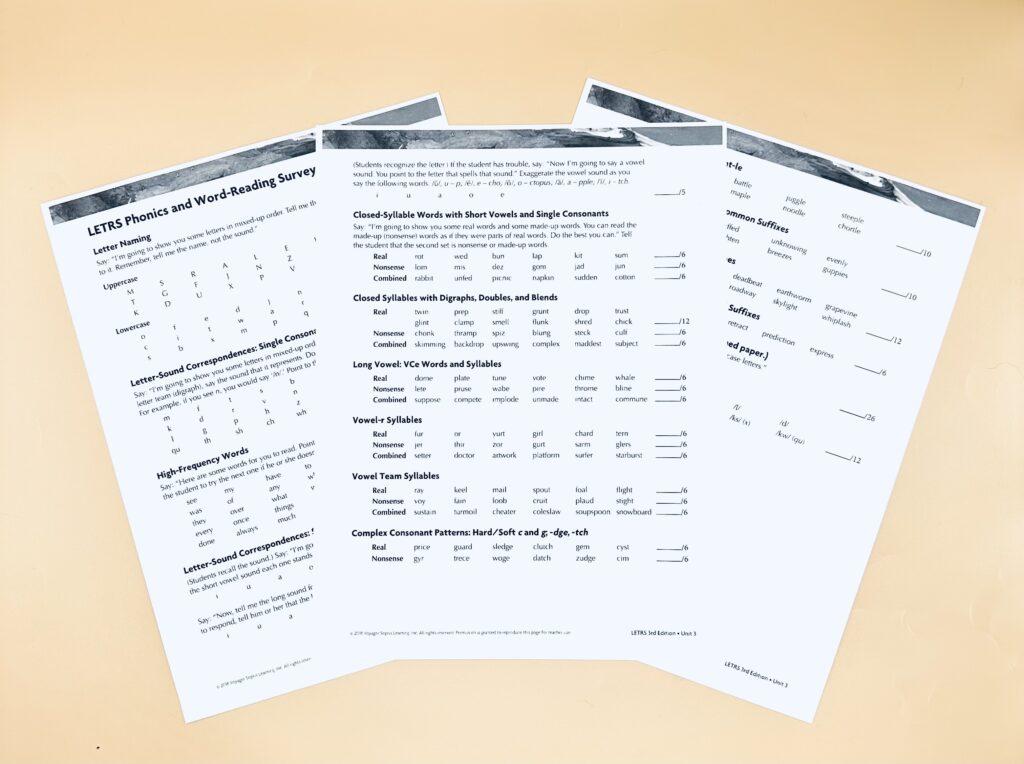
Share This:
You’ve made the switch from balanced literacy to structured literacy. You’re using explicit phonics instruction and making sure you hit the actual skills your students need to become proficient readers-not simply moving them through the levels.
But that nagging thought still bounces around in your head—how do we know if our children are reading on grade level if we aren’t using leveled texts?
Today, I want to talk about how leveled texts don’t actually tell us if children are on grade level, and then I want to give us some ideas for how we can start reframing this conversation around proficiency at grade level.
Guided reading levels made our lives easier. I haven’t taught 4th grade in almost 10 years and I can still tell you that Q, R, and S are the expected guided reading levels for that grade. It’s so easy to grab a leveled text and see if a child can read a text with at least 90% accuracy and say “yup, they’re on grade level” or “nope, not even close.”
But there are huge flaws in using guided reading levels to determine if a child is reading on grade level. The biggest issue is that these texts aren’t normed or tested in any real way to determine if they are reliable. There is not a single way to determine a guided reading level on a text. I have seen several examples where a book was leveled with one level by a particular website, just to then be leveled something else at another.
I think we have all been in a situation where we had two texts of the same “level” and one seemed much easier than the other one.

There’s a document on Fountas and Pinnell’s website that gives you information about HOW they level their texts, but it requires registration in order to read. Shouldn’t something as important as determining factors of levels be public knowledge?
Bottom line is that guided reading levels are not a reliable form of assessment for determining if a child is reading on grade level.
Beyond the fact that the levels are not reliable, there are two additional flaws in all of these “leveling” systems: the lack of a scope and sequence and the role of background knowledge.
Explicit phonics instruction is critical for most of our students-that is a fact that has copious amounts of research to support it. The National Reading Panel, released 24 years ago now, examined all available research to show that phonics instruction has a positive impact on student achievement. And nothing since has changed those findings.
Yet guided reading levels do not consider phonics knowledge as its primary source of leveling. While phonics may be considered as a factor, it is but one of several factors they use to determine a guided reading level. Other factors include genre, text structure, illustrations, and sentence length. It is also important to note that any phonics that is considered is based off of embedded phonics, not synthetic phonics.
Leveled texts do not take into account a scope and sequence (a requirement for synthetic phonics, and this leads to books that children have to guess their way through, and leaves children unable to practice the phonics knowledge they’ve learned. Even if a teacher is using a scope and sequence, the leveled texts do not support that work the teacher has done because leveled texts are not controlled for phonics patterns.

Using phonics to teach students, but then using leveled texts to practice is like teaching children addition and then following up with a worksheet that has multiplication, division, and subtraction too. Leveled texts just do not give children the practice they need in taught skills to become proficient readers.
One of the biggest issues with any leveling system is that it does not consider background knowledge. The amount of background knowledge children have about a subject plays a huge role in whether or not they can read and understand a text.
If you have a high level of background knowledge on a topic, then you will better understand a text, even if your reading ability is lower. Research has found that “Readers who have a strong knowledge of a particular topic… are more able to comprehend a text than a similarly cohesive text for which they lack background knowledge. This was evident for both skilled and low skilled readers”(R. Smith et. al. 2021, p.226). So if we had two level M texts, and one child knows a lot about a topic, they will perform better than someone with a similar reading level who does not know as much.

Does that mean that the student with background knowledge possesses more reading skill and should be higher than a level M? Does that mean the low background knowledge student should be brought down to a lower guided reading level and is not reading on grade level? You see the problem? Children with identical phonics skills can have different background knowledge and therefore end up being labeled with wildly different guided reading levels, all based on what they already know about a topic.
It reminds me of a student I had in 4th grade. He was not a struggling reader, but he also wasn’t above grade level. He was, however, obsessed with everything military. It wouldn’t have mattered what level a book was, if it had to do with military history, he could read it. His background knowledge about the subject was so large, that reading levels really didn’t matter when it came to those texts for him. One time he schooled me, I kid you not, because I confused a catapult and a trebuchet. And don’t get that 9 year old started on communist Russia.
So how do we determine if a child is reading on grade level? We start with universal screeners. A universal screener is a quick assessment given three times a year to students. Think of it like a well visit at the doctor’s office. At a well visit, you show up and your doctor takes basic vitals. From those, the doctor will decide if anything further is warranted or if you are good until the next well visit.
Universal screeners are that well visit. They are quick insights into a child’s performance to let you know if a child is at-risk for reading failure. If the screener does not indicate a risk of reading failure, it is safe to assume that they are reading on grade level.
ORF (Oral Reading Fluency) is a fantastic universal screener that can help us determine if children are where they need to be. With an ORF, a child reads a normed passage for 1 minute. After that one minute, words correct per minute (WCPM) will be calculated. Children will then be given a percentile rank from 1-99. A percentile rank of 50 means that the child has performed better than 50 percent of other children who take the assessment. In my district, anything above the 40th percentile is considered at/above grade level.
What’s wild about ORF is that there are free versions out there, and it is so much easier to administer than trying to determine a child’s guided reading level. This is an example where changing practices can actually make our lives easier, not harder.
When the screener does show that there may be some weaknesses, we administer diagnostics. A diagnostic is given to some children to see what their specific weaknesses are. This is not giving them guided reading books to determine a level. Instead, we can administer things like a phonics screener and a spelling inventory that will pinpoint specific weaknesses of theirs.

For so long, guided reading levels were ingrained in our brains as the way we determined if a child was reading on grade level. But guided reading levels don’t actually tell us what we thought they would. Guided reading levels are an example of how corporate greed trickled its way into mainstream education. We shifted an entire educational system to accommodate guided reading, and we made these balanced literacy superstars multimillionaires in the process. I’m proud to be a (very) small part of the movement that is working to move away from these practices towards the ones that will help ALL children become proficient readers. And if you are reading these words, you’re a part of it too. So let’s get to work, because our kids’ futures are waiting.
Share This:

Savannah Campbell is a K-5 reading specialist. She has taught her entire 12-year teaching career at the school she went to as a child. She holds two master’s degrees in education from the College of William and Mary. Savannah is both Orton-Gillingham and LETRS trained. Her greatest hope in life is to allow all children to live the life they want by helping them to become literate individuals.

Savannah Campbell is a K-5 reading specialist. She has taught her entire 12-year teaching career at the school she went to as a child. She holds two master’s degrees in education from the College of William and Mary. Savannah is both Orton-Gillingham and LETRS trained. Her greatest hope in life is to allow all children to live the life they want by helping them to become literate individuals.
Feeling overwhelmed with all the terminology out there? Want to know the key terms all teachers need to teach phonics? In this FREE Rules of English cheat sheet, you get a 5 page pdf that takes you through the most important terms for understanding English—you’ll learn about digraphs, blends, syllable types, syllable divisions, and move. Grab today and take the stress out of your phonics prep!
